项目代码
- // Demo based on:
- // UTFT_Demo_320x240 by Henning Karlsen
- // web: http://www.henningkarlsen.com/electronics
- //
- /*
-
- This sketch uses the GLCD and font 2 only.
-
- Make sure all the display driver and pin connections are correct by
- editing the User_Setup.h file in the TFT_eSPI library folder.
-
- #########################################################################
- ###### DON'T FORGET TO UPDATE THE User_Setup.h FILE IN THE LIBRARY ######
- #########################################################################
- */
-
- #include "SPI.h"
-
- #include "TFT_eSPI.h"
-
- #define TFT_GREY 0x7BEF
-
- TFT_eSPI myGLCD = TFT_eSPI(); // Invoke custom library
-
- unsigned long runTime = 0;
- void setup()
- {
- randomSeed(analogRead(A0));
- // Setup the LCD
- myGLCD.init();
- myGLCD.setRotation(1);
- }
-
- void loop()
- {
- randomSeed(millis());
- //randomSeed(1234); // This ensure test is repeatable with exact same draws each loop
- int buf[318];
- int x, x2;
- int y, y2;
- int r;
- runTime = millis();
- // Clear the screen and draw the frame
- myGLCD.fillScreen(TFT_BLACK);
-
-
- myGLCD.fillRect(0, 0, 319, 14,TFT_RED);
-
- myGLCD.fillRect(0, 226, 319, 14,TFT_GREY);
-
- myGLCD.setTextColor(TFT_BLACK,TFT_RED);
- myGLCD.drawCentreString("* TFT_eSPI *", 160, 4, 1);
- myGLCD.setTextColor(TFT_YELLOW,TFT_GREY);
- myGLCD.drawCentreString("Adapted by Bodmer", 160, 228,1);
-
- myGLCD.drawRect(0, 14, 319, 211, TFT_BLUE);
-
- // Draw crosshairs
- myGLCD.drawLine(159, 15, 159, 224,TFT_BLUE);
- myGLCD.drawLine(1, 119, 318, 119,TFT_BLUE);
- for (int i=9; i<310; i+=10)
- myGLCD.drawLine(i, 117, i, 121,TFT_BLUE);
- for (int i=19; i<220; i+=10)
- myGLCD.drawLine(157, i, 161, i,TFT_BLUE);
-
- // Draw sin-, cos- and tan-lines
- myGLCD.setTextColor(TFT_CYAN);
- myGLCD.drawString("Sin", 5, 15,2);
- for (int i=1; i<318; i++)
- {
- myGLCD.drawPixel(i,119+(sin(((i*1.13)*3.14)/180)*95),TFT_CYAN);
- }
- myGLCD.setTextColor(TFT_RED);
- myGLCD.drawString("Cos", 5, 30,2);
- for (int i=1; i<318; i++)
- {
- myGLCD.drawPixel(i,119+(cos(((i*1.13)*3.14)/180)*95),TFT_RED);
- }
- myGLCD.setTextColor(TFT_YELLOW);
- myGLCD.drawString("Tan", 5, 45,2);
- for (int i=1; i<318; i++)
- {
- myGLCD.drawPixel(i,119+(tan(((i*1.13)*3.14)/180)),TFT_YELLOW);
- }
-
- delay(0);
-
- myGLCD.fillRect(1,15,317,209,TFT_BLACK);
-
- myGLCD.drawLine(159, 15, 159, 224,TFT_BLUE);
- myGLCD.drawLine(1, 119, 318, 119,TFT_BLUE);
- int col = 0;
- // Draw a moving sinewave
- x=1;
- for (int i=1; i<(317*20); i++)
- {
- x++;
- if (x==318)
- x=1;
- if (i>318)
- {
- if ((x==159)||(buf[x-1]==119))
- col = TFT_BLUE;
- else
- myGLCD.drawPixel(x,buf[x-1],TFT_BLACK);
- }
- y=119+(sin(((i*1.1)*3.14)/180)*(90-(i / 100)));
- myGLCD.drawPixel(x,y,TFT_BLUE);
- buf[x-1]=y;
- }
-
- delay(0);
-
- myGLCD.fillRect(1,15,317,209,TFT_BLACK);
-
- // Draw some filled rectangles
- for (int i=1; i<6; i++)
- {
- switch (i)
- {
- case 1:
- col = TFT_MAGENTA;
- break;
- case 2:
- col = TFT_RED;
- break;
- case 3:
- col = TFT_GREEN;
- break;
- case 4:
- col = TFT_BLUE;
- break;
- case 5:
- col = TFT_YELLOW;
- break;
- }
- myGLCD.fillRect(70+(i*20), 30+(i*20), 60, 60,col);
- }
-
- delay(0);
-
- myGLCD.fillRect(1,15,317,209,TFT_BLACK);
-
- // Draw some filled, rounded rectangles
- for (int i=1; i<6; i++)
- {
- switch (i)
- {
- case 1:
- col = TFT_MAGENTA;
- break;
- case 2:
- col = TFT_RED;
- break;
- case 3:
- col = TFT_GREEN;
- break;
- case 4:
- col = TFT_BLUE;
- break;
- case 5:
- col = TFT_YELLOW;
- break;
- }
- myGLCD.fillRoundRect(190-(i*20), 30+(i*20), 60,60, 3,col);
- }
-
- delay(0);
-
- myGLCD.fillRect(1,15,317,209,TFT_BLACK);
-
- // Draw some filled circles
- for (int i=1; i<6; i++)
- {
- switch (i)
- {
- case 1:
- col = TFT_MAGENTA;
- break;
- case 2:
- col = TFT_RED;
- break;
- case 3:
- col = TFT_GREEN;
- break;
- case 4:
- col = TFT_BLUE;
- break;
- case 5:
- col = TFT_YELLOW;
- break;
- }
- myGLCD.fillCircle(100+(i*20),60+(i*20), 30,col);
- }
-
- delay(0);
-
- myGLCD.fillRect(1,15,317,209,TFT_BLACK);
-
- // Draw some lines in a pattern
-
- for (int i=15; i<224; i+=5)
- {
- myGLCD.drawLine(1, i, (i*1.44)-10, 223,TFT_RED);
- }
-
- for (int i=223; i>15; i-=5)
- {
- myGLCD.drawLine(317, i, (i*1.44)-11, 15,TFT_RED);
- }
-
- for (int i=223; i>15; i-=5)
- {
- myGLCD.drawLine(1, i, 331-(i*1.44), 15,TFT_CYAN);
- }
-
- for (int i=15; i<224; i+=5)
- {
- myGLCD.drawLine(317, i, 330-(i*1.44), 223,TFT_CYAN);
- }
-
- delay(0);
-
-
- myGLCD.fillRect(1,15,317,209,TFT_BLACK);
-
- // Draw some random circles
- for (int i=0; i<100; i++)
- {
- x=32+random(256);
- y=45+random(146);
- r=random(30);
- myGLCD.drawCircle(x, y, r,random(0xFFFF));
- }
-
- delay(0);
-
- myGLCD.fillRect(1,15,317,209,TFT_BLACK);
-
- // Draw some random rectangles
- for (int i=0; i<100; i++)
- {
- x=2+random(316);
- y=16+random(207);
- x2=2+random(316);
- y2=16+random(207);
- if (x2<x) {
- r=x;x=x2;x2=r;
- }
- if (y2<y) {
- r=y;y=y2;y2=r;
- }
- myGLCD.drawRect(x, y, x2-x, y2-y,random(0xFFFF));
- }
-
- delay(0);
-
-
- myGLCD.fillRect(1,15,317,209,TFT_BLACK);
-
- // Draw some random rounded rectangles
- for (int i=0; i<100; i++)
- {
- x=2+random(316);
- y=16+random(207);
- x2=2+random(316);
- y2=16+random(207);
- // We need to get the width and height and do some window checking
- if (x2<x) {
- r=x;x=x2;x2=r;
- }
- if (y2<y) {
- r=y;y=y2;y2=r;
- }
- // We need a minimum size of 6
- if((x2-x)<6) x2=x+6;
- if((y2-y)<6) y2=y+6;
- myGLCD.drawRoundRect(x, y, x2-x,y2-y, 3,random(0xFFFF));
- }
-
- delay(0);
-
- myGLCD.fillRect(1,15,317,209,TFT_BLACK);
-
- //randomSeed(1234);
- int colour = 0;
- for (int i=0; i<100; i++)
- {
- x=2+random(316);
- y=16+random(209);
- x2=2+random(316);
- y2=16+random(209);
- colour=random(0xFFFF);
- myGLCD.drawLine(x, y, x2, y2,colour);
- }
-
- delay(0);
-
- myGLCD.fillRect(1,15,317,209,TFT_BLACK);
-
- // This test has been modified as it takes more time to calculate the random numbers
- // than to draw the pixels (3 seconds to produce 30,000 randoms)!
- for (int i=0; i<10000; i++)
- {
- myGLCD.drawPixel(2+random(316), 16+random(209),random(0xFFFF));
- }
-
- // Draw 10,000 pixels to fill a 100x100 pixel box
- // use the coords as the colour to produce the banding
- //byte i = 100;
- //while (i--) {
- // byte j = 100;
- // while (j--) myGLCD.drawPixel(i+110,j+70,i+j);
- // //while (j--) myGLCD.drawPixel(i+110,j+70,0xFFFF);
- //}
- delay(0);
-
- myGLCD.fillScreen(TFT_BLUE);
- myGLCD.fillRoundRect(80, 70, 239-80,169-70, 3,TFT_RED);
-
- myGLCD.setTextColor(TFT_WHITE,TFT_RED);
- myGLCD.drawCentreString("That's it!", 160, 93,2);
- myGLCD.drawCentreString("Restarting in a", 160, 119,2);
- myGLCD.drawCentreString("few seconds...", 160, 132,2);
-
- runTime = millis()-runTime;
- myGLCD.setTextColor(TFT_GREEN,TFT_BLUE);
- myGLCD.drawCentreString("Runtime: (msecs)", 160, 210,2);
- myGLCD.setTextDatum(TC_DATUM);
- myGLCD.drawNumber(runTime, 160, 225,2);
- delay (5000);
- }
-
|

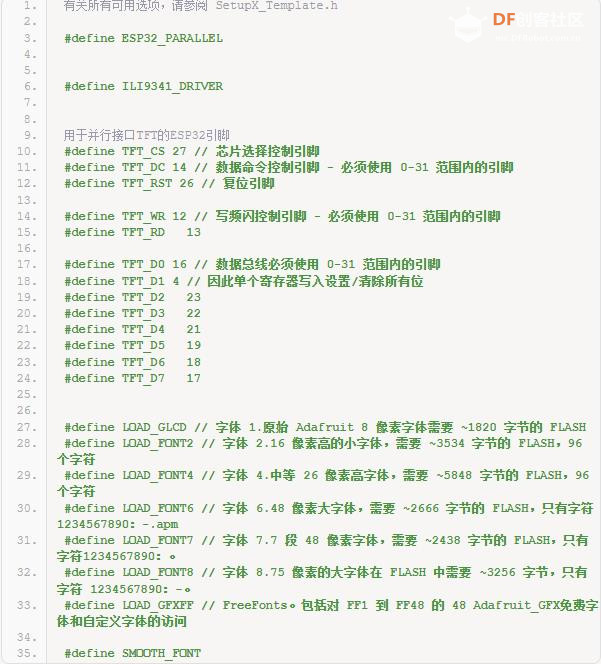
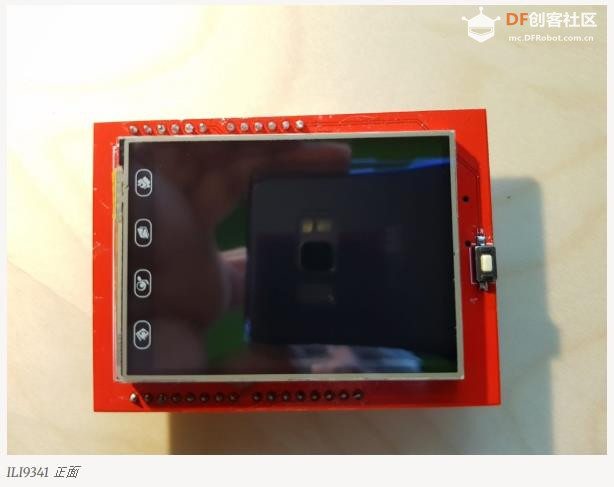
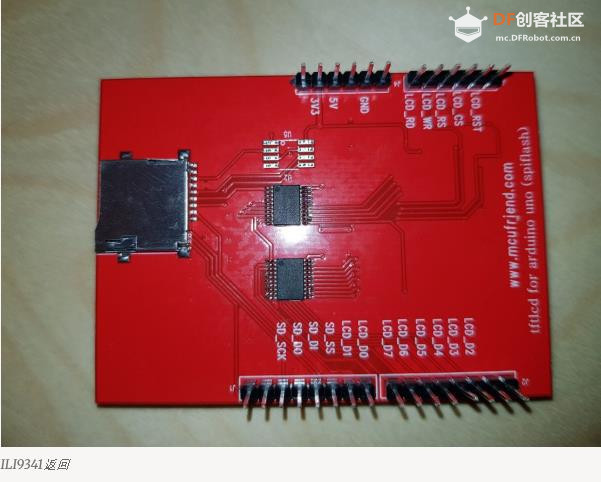
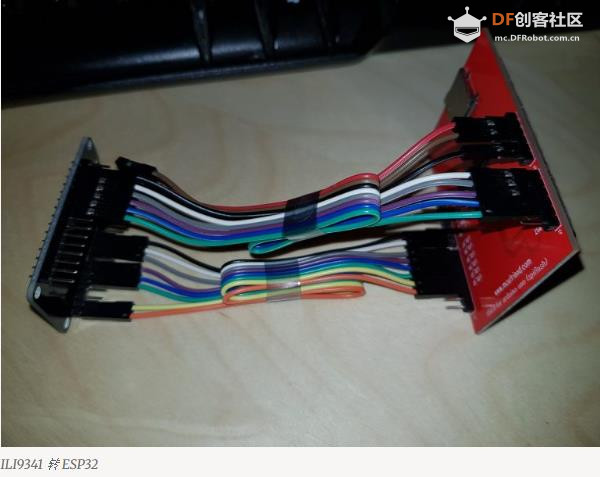
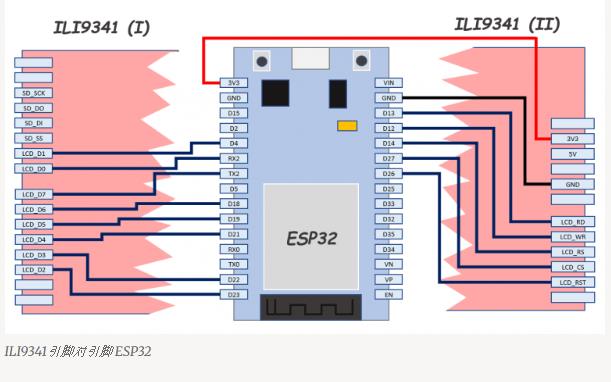
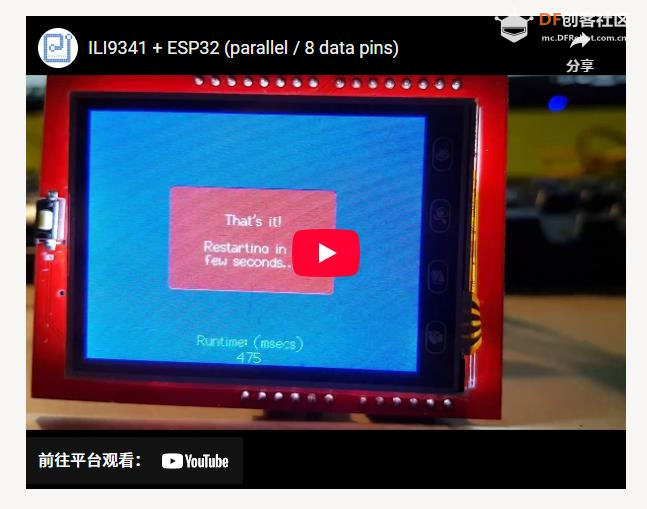
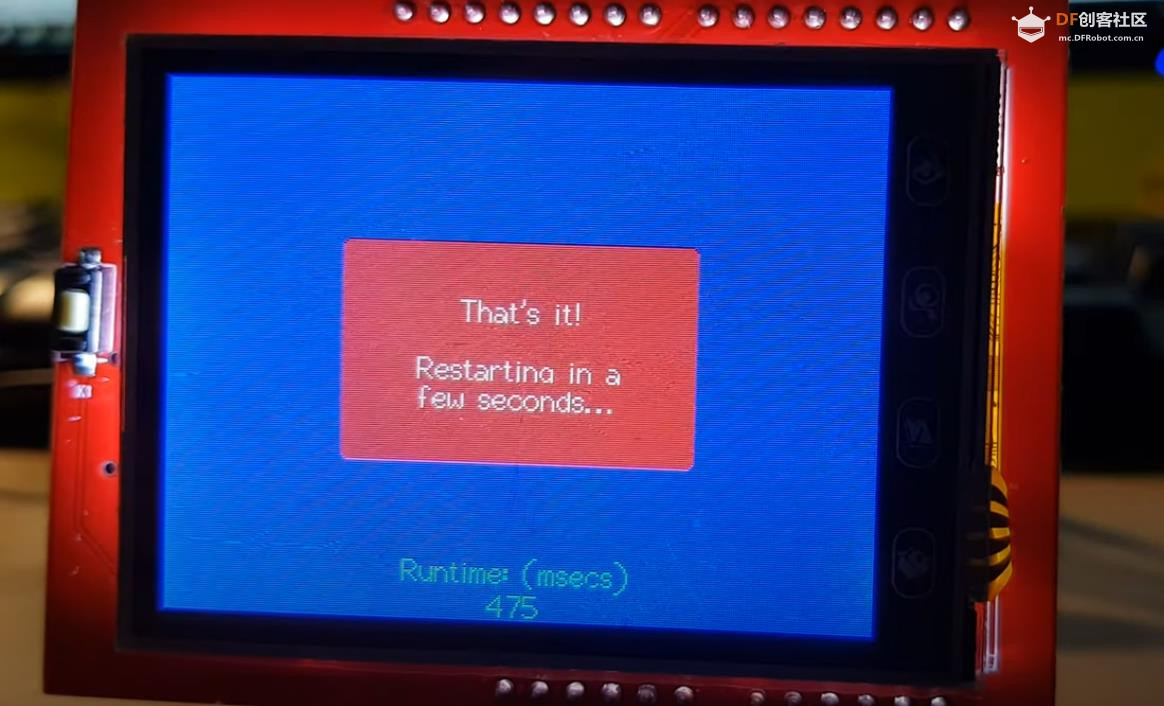
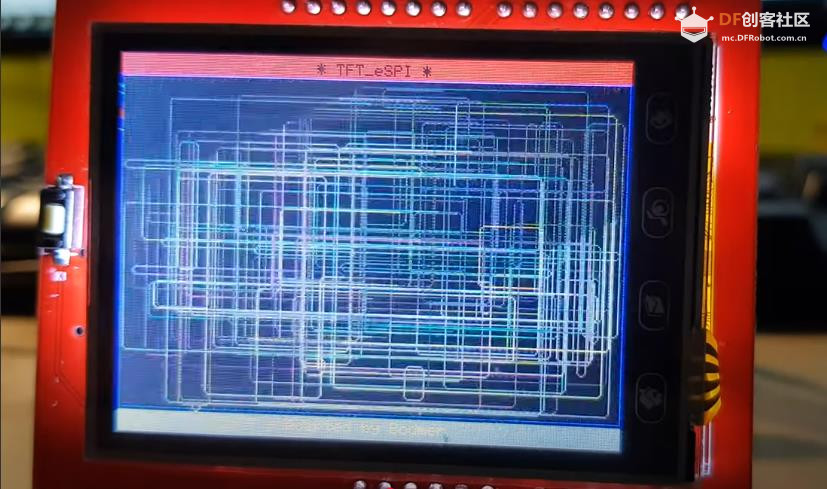
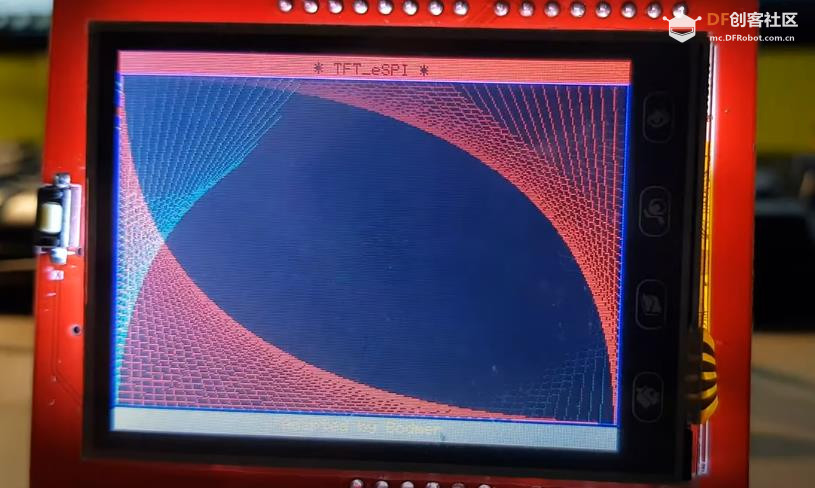
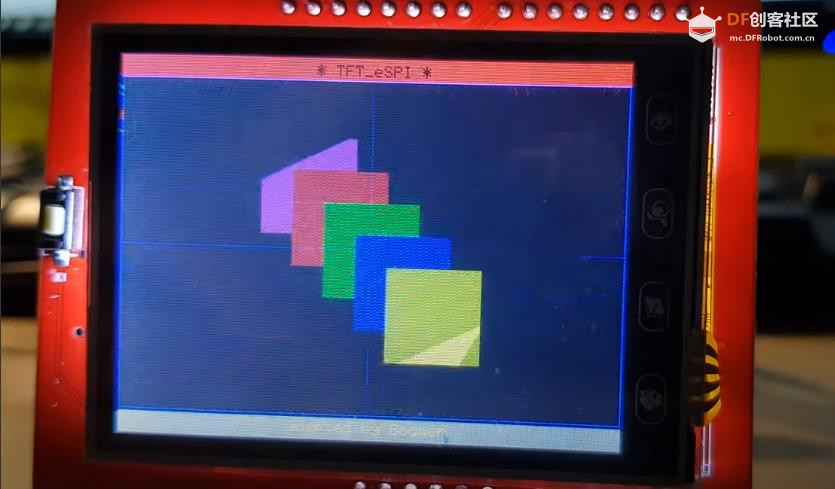
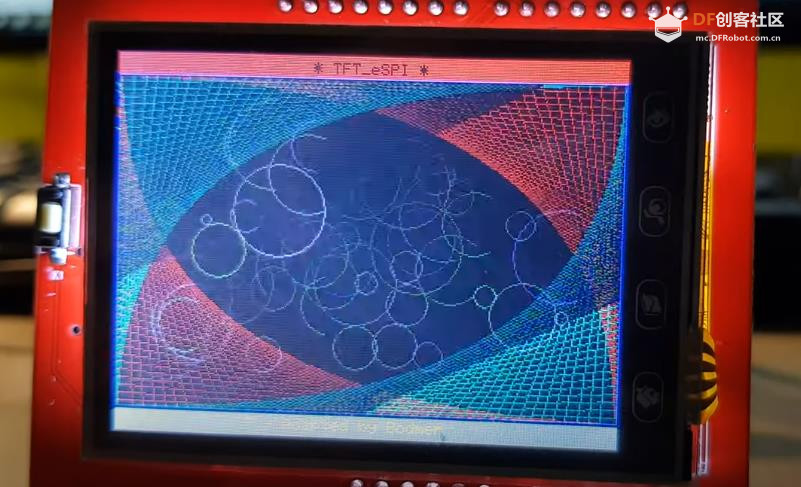
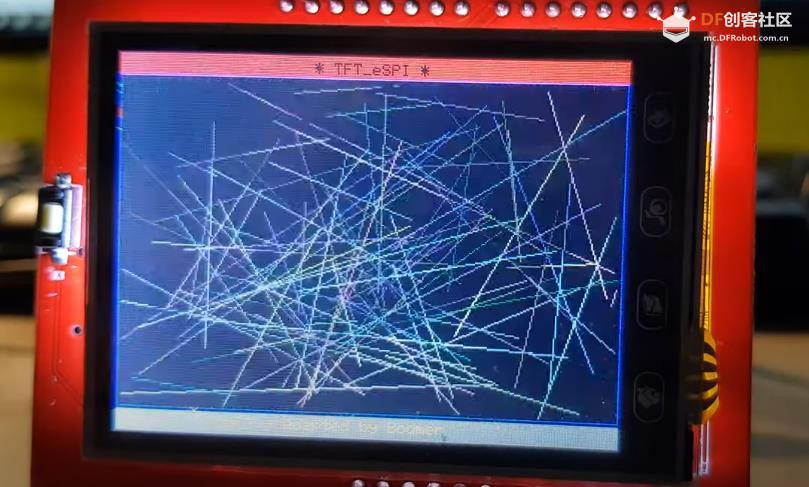
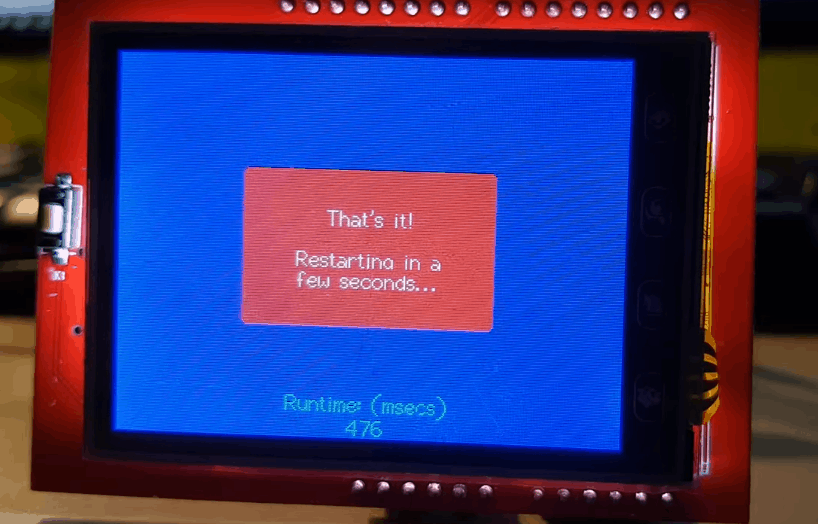
 沪公网安备31011502402448
沪公网安备31011502402448